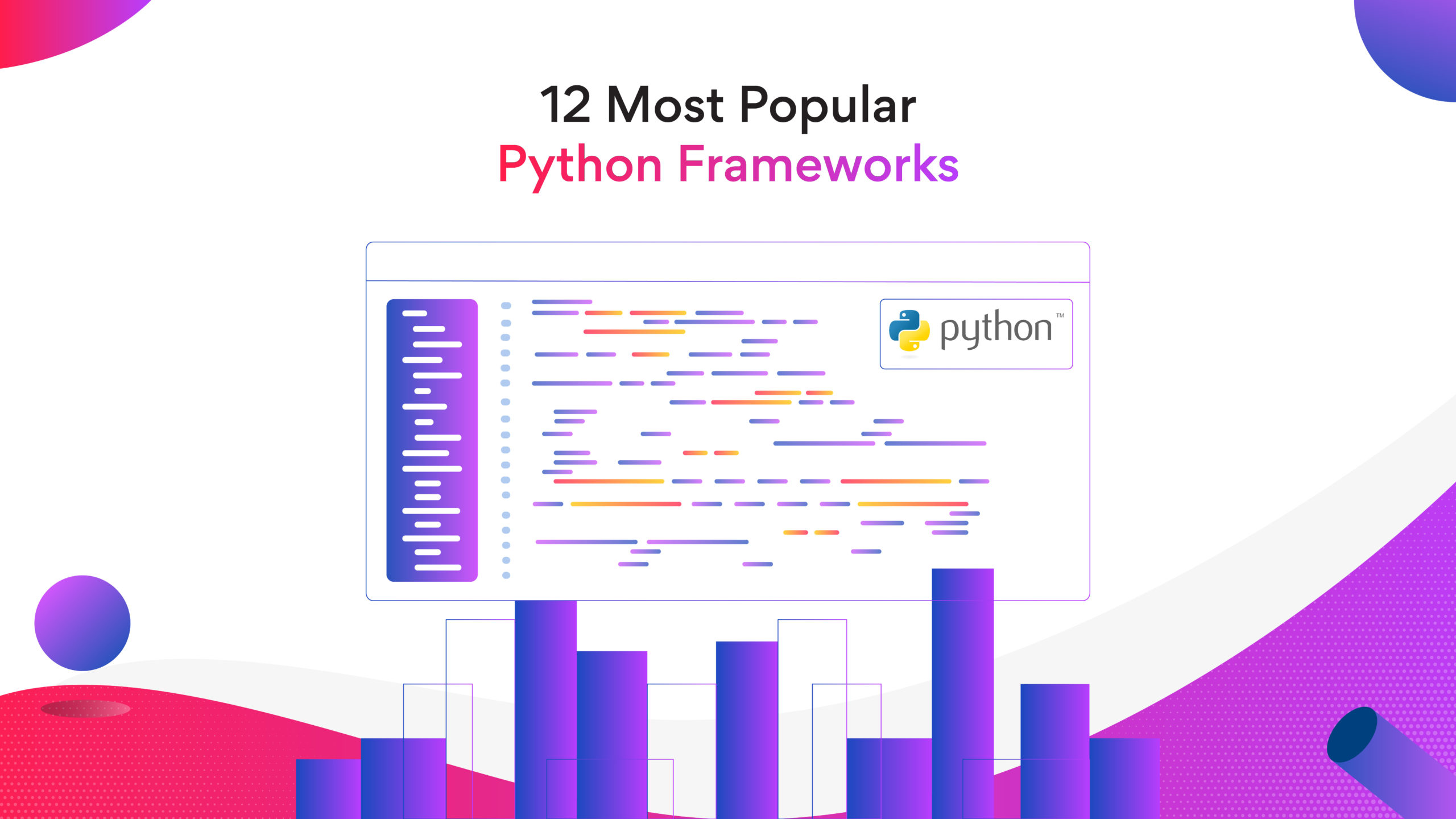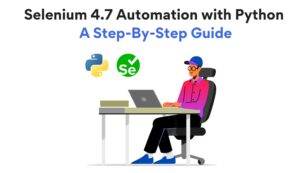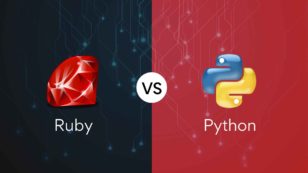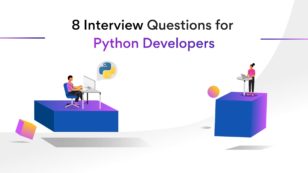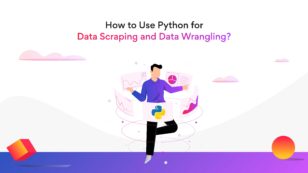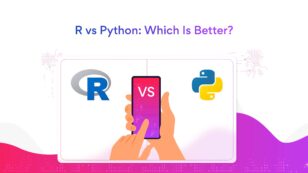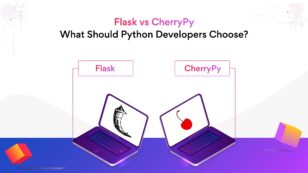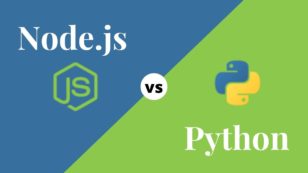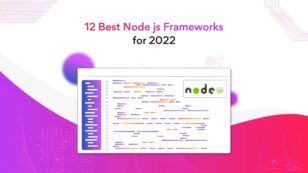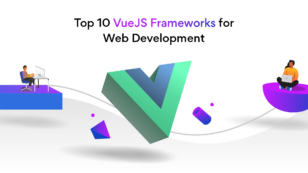12 Most Popular Python Frameworks
How many types of Python frameworks are there? Is PyCharm a framework? Is Anaconda a Python framework? Is NumPy a framework? Is Django a full-stack framework? Which is the best Python framework?
Looking for answers to these questions? Keep reading to find out.
Introduction
Python is one of the most widely used programming languages today. It’s a dynamically typed, interpreted, and object-oriented programming language that makes developing code simple and logical.
However, Python has limited functionality when it comes to server connectivity. And so, Python uses different frameworks for app development. Python frameworks offer many advantages, such as safety, structure, accessibility, and good documentation.
Python has frameworks for virtually every technical domain, but before we dive into the types of frameworks, let’s find out what a Python framework is.
What is a Python framework?
A Python framework is a set of packages and modules that enable developers to easily create web applications and services. The framework relieves developers from low-level issues such as protocols, sockets, and thread management.
Similarly, Python frameworks reduce development time by providing a prebuilt implementation of redundant activities.
Why do developers use Python frameworks?
Developers use Python frameworks to reuse code for similar sorts of HTTP activities and to give an application structure and preset functionalities.
In addition, most developers prefer frameworks over libraries since they are more idiomatic, dependable, and easy to extend the functions using the frameworks’ tools.
What are the types of Python frameworks?
Python majorly has three categories of frameworks – full-stack framework, micro-framework, and asynchronous framework. Here is a brief explanation for each of them:
- Full-stack framework: These types of frameworks offer a complete web development solution, including form generators, form validation, and template layouts. Full-stack frameworks offer various applications; however, they’re difficult to use.
Here are a few full-stack Python frameworks:
- CubicWeb
- Django
- Giotto
- Pylons
- Micro frameworks: These frameworks are simple and lightweight with no additional functionality like a data abstraction layer or form validation. These frameworks are useful for mid-size applications.
Here are a few Micro Python frameworks:
- Bottle
- CherryPy
- Dash
- Falcon
- Asynchronous frameworks: These frameworks have recently gained popularity, and they work with the Asyncio library. These frameworks mostly run large numbers of concurrent connections in software and applications.
Here are a few Asynchronous Python frameworks:
- AIOHTTP
- Growler
- Sanic
- Tornado
- AIOHTTP
Related post: Ruby vs. Python: What Is the Difference?
Full-Stack Python frameworks

Python Fullstack Framework
-
CubicWeb
CubicWeb is an open-source, semantic, free Python framework. By reusing components called cubes, this framework allows developers to build web apps quickly. CubicWeb is one of the most effective frameworks for developing semantic web apps that are efficient, reusable, and of high quality.
Key highlights of CubicWeb Python framework:
- Offers workflows for security.
- There is a component reusability function.
- Supports the Resource Description Framework (RDF) and the Web Ontology Language (OWL).
- Simplifies data-related inquiries with Relational Query Language (RQL).
- Supports multiple databases.
-
Django
Django is a popular high-level web application development framework that allows developers to swiftly create Python apps. This framework employs a practical design and adheres to the Don’t Repeat Yourself (DRY) concept.
In comparison to other Python frameworks, Django provides many built-in capabilities rather than distinct libraries. The Object-Relational Mapping (ORM) layer in Django maps objects to database tables. In addition, Django provides built-in support for various databases, including Oracle, MySQL, and others.
Key highlights of Django Python framework:
- Routing URLs
- Better web server support
- Better authentication support
- Exceptionally quick framework
- Ready to use libraries
- Easily customizable
-
Giotto
Giotto is a Model View Controller (MVC) framework. Giotto’s features include a free RESTful interface, automatic URL routing, and Jinja2 for HTML templates with an API.
Giotto also comes with a controller module that allows users to build apps on top of the command line, the web, and Internet Relay Chat (IRC).
Key highlights of Giotto Python framework:
- Common views and models
- Automated and built-in URL routing
- Several plug-in controllers
- Database persistence by SQLAlchemy
- Workable CRUD patterns
- Many available RESTful interfaces
- Common views and models
-
Pylons
Pylons is an open-source web-based framework that focuses on quick application development. This framework primarily incorporates some of the best features and qualities of popular programming languages like Ruby, Perl, and Python.
Key Highlights of Pylons Python framework:
- URL dispatch
- Text-based templating
- URL mapping based on routes configuration via WebHelpers
- HTML form generation and validation
Related post: Node.JS vs. Python: What Should You Choose?
Micro Python frameworks

Micro Python Framework
-
Bottle
Bottle is one of the most popular micro web frameworks for building Python apps. It has no dependencies and is supplied as a single file module, with only one Python standard library.
One of the most important features of the Bottle framework is that it allows programmers to work closely with the hardware. The Bottle framework is ideal for creating and developing simple personal applications.
Key highlights of Bottle Python framework:
- In-built HTTP server
- Plugin support for different databases
- Support for third-party HTTP/WSGI servers and template engines via adapters
- Support for file uploads, headers, and cookies
- No external dependencies
-
CherryPy
CherryPy is an open-source and minimalist framework for quickly developing web applications based on the object-oriented paradigm. The apps built with CherryPy are self-contained and run on their multi-threaded web server.
Key Highlights of CherryPy Python framework:
- Runs on Android
- Runs on multiple HTTP servers at once
- Offers a flexible built-in plugin system
- Provides a powerful configuration system
-
Dash
Dash is one of the best open-source microframeworks for developing and building web-based analytical apps. It is well-suited for data scientists unfamiliar with the web development process. Dash applications are comparable to web servers, as they communicate with JSON packets via HTTP requests.
To construct its own features, Dash uses Flask plugins because they can be rendered and distributed on the webservers. Dash applications are mobile-ready and work across all platforms.
Key highlights of Dash Python framework:
- Better plugin support
- Effective error handling mechanism
- URL routing functionality
- LDAP integration functionality
- Simple interface
- Many customization features
-
Falcon
Developers use this framework to design and develop web APIs quickly. Falcon enables developers to create web apps with a clean design. Falcon can improve and alter existing HTTP and REST architecture styles.
Key highlights of Falcon Python framework:
- A codebase that is extremely efficient and extensible.
- Response time for HTTP errors is accurate and efficient.
- Unit testing is possible with mocks and WSGI helpers.
- Request and response classes provide easy control and access to bodies and headers.
- Hooks and middleware components process DRY requests.
- With Falcon’s help, developers can further increase app speed.
Asynchronous Python frameworks
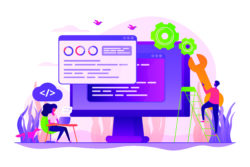
Asynchronous Python Framework
-
AIOHTTP
AIOHTTP is a popular asynchronous Python framework based on Python 3.5+ features like Async and Awaits. AIOHTTP is a client-side framework and uses the Asyncio library.
One of the primary benefits of AIOHTTP is that it supports both server and client WebSockets without requiring Callback Hell. AIOHTTP also includes a router and a request object for changing the direction of queries to functions.
Key highlights of AIOHTTP Python framework:
- Supports HTTP servers
- Provides pluggable routing and middlewares for web servers
- Offer effective building of views
-
Growler
Growler is based on Node.js’s express framework, Object Relational Mapping (ORM), and Templating. It is similar to AIOHTTP.
Growler passes the requests through middleware technologies rather than handling them. It is one of the better choices among other Python frameworks because it makes complex app development easy.
Key Highlights of Growler Python framework:
- More use of decorators to write reusable and effective code.
- Availability of Ziapp model to zip the entire application into a single executable file.
- Support for a multitude of open-source packages.
-
Sanic
Sanic is an open-source Python framework based on the uvloop framework. One of its main benefits is using asynchronous request handling to provide rapid HTTP answers.
Sanic also supports request handlers and compares them to the Await or Async routines in Python 3.5. As a result of this compatibility, Sanic provides non-blocking capabilities and increased speed in software and applications.
Key highlights of Sanic Python framework:
- Plugin support
- Class-based views
- Able to write and read cookies
- Allows various types of error logs and access logs
- Availability of handlers with easy to apply decorator support
-
Tornado
Tornado is one of the best Python frameworks, as it provides database support, URL handling, HTML templates, and other elements that are crucial to any form of application.
Tornado simplifies web server programming and places a strong emphasis on non-blocking activities. This framework can also handle a lot of open connections.
Key highlights of Tornado Python framework:
- Extensive support for localization and translation
- Availability of web templating techniques
- Real-time services
- Offers effective results
- Allows the implementation of third party authorization and authentication
So, which is the best Python framework for you?
Though there are several popular and in-demand python frameworks, each has its own set of advantages and disadvantages. Choosing a Python framework largely depends on the project requirements and the developer’s experience with the framework.
However, if you wish to develop an application with a particular framework, but don’t have the right resource with you, try Turing.com. Turing’s AI-backed Intelligent Talent Cloud will help you source, vet, match, and manage the world’s best software developers remotely. Turing has a depository of 1.5 million+ developers from 150 countries skilled in 100+ languages like Python, Ruby, Java, Kotlin, and more.
Are you a developer looking for remote Python jobs? If yes, Try Turing! Turing can help you land a high-growth, remote job with some of the best US companies. Head over to the Jobs page for more information!
FAQs
- What is a Python framework?
The Python Web framework is a set of packages and modules that enable programmers to create web applications and services. It relieves developers of the burden of dealing with low-level issues such as protocols, sockets, and process/thread management. - Which framework is mostly used in Python?
Django is the most popular Python full-stack framework. When it comes to developing sophisticated web apps, Django has a reputation for being extremely fast and reliable. - Is PyCharm a framework?
No! PyCharm is an integrated development environment. It simplifies web application development by inheriting all of IntelliJ IDEA’s web-related functionality, including JavaScript support. - Is Anaconda a framework?
Anaconda is a Python and R programming language distribution system aimed at simplifying package management and deployment in scientific computing. - Is NumPy a framework?
NumPy is a library for the Python programming language.
Join a network of the world's best developers and get long-term remote software jobs with better compensation and career growth.
